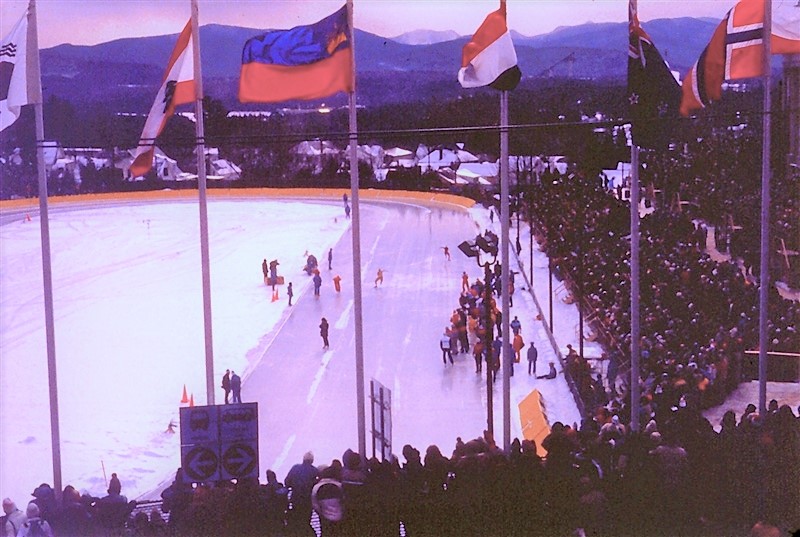No Snow in Sight: The NWS and the 1980 Olympic Winter Games - National Weather Service Heritage

No Snow in Sight: The NWS and the 1980 Olympic Winter Games
By Emily Senesac (emily.senesac@noaa.gov)The Weather Bureau’s Olympic Support Unit (OSU) at the 1960 Olympic Winter Games in Squaw Valley, California proved to be quite a success. When the Winter Games returned to the United States two decades later, National Weather Service (NWS) meteorologists got another opportunity to participate. The 1980 Games, hosted in Lake Placid, NY, had their own unique set of challenges for meteorologists and athletes alike, the most troubling of which was the lack of winter weather in the Adirondacks that year. In other words: there was not enough snow.
During these Games, the NWS Olympic Support Unit (made up of three meteorologists, one NY state meteorologist, and one college intern) provided forecast support and services to those who were attending, supporting, and participating in the games. In order to learn more about the sports they would be forecasting for, the NWS team arrived at Lake Placid several weeks before the start of the games, collecting data, identifying weather patterns, and making predictions. Prior to this preliminary preparation, the OSU even did a trial run from February to March of 1979, working with the participants in the national and World Cup Ski races that were hosted in the same location. Even still, and despite years of planning, the lack of snow was atypical for that time of year, making the job that much harder.
The absence of snow and cold temperatures in the region leading up to the XIII Olympic Winter Games proved to be an obstacle for skiers and ice-oriented athletes. In order to ensure that all the events could proceed as scheduled, the Olympic Winter Games had to do something they had never done before -- they had to create their own winter. While there was not enough real, organic snow to support the Games, a perfectly-timed cold snap provided the outdoor environment necessary to facilitate the creation and maintenance of artificial snow.
Other challenges arose in the weeks leading up to and during the XIII Olympic Winter Games. The remoteness of Lake Placid, for example, made communication and mobility difficult for all. Consequently, there were delays in the construction of Olympic facilities, issues with power and security, and transportation problems. In terms of the NWS office, minimalist was an understatement: originally, there were no doors, windows, electricity, heat, furniture, or phone (though they all appeared eventually). Even so, the OSU continued to provide forecasts, warnings, and watches for the events, with instruments positioned at all Olympic venues. They were aided by the NWS weather forecasting office in Albany, which served as a weather advisor for the Olympic region. Though the “no snow” obstacle was solved with artificial snow, there was one weather-related scare: on February 20, the temperature skyrocketed to 50 degrees, threatening to melt ice and worrying officials and managers. In the midst of the chaos, NWS meteorologists had to reassure concerned personnel that a lake being used for the Games, Mirror Lake, wasn’t going to thaw. It didn’t. A few days later, some cold Canadian air drifted down into the region, causing the temperature to fall once again.
On the whole, NWS participation in the 1980 Lake Placid Olympic Winter Games was a monumental success, proving once again the value of weather forecasting for large athletic events where public safety is of critical importance.
Dr. John G.W. Kelley, the same college intern who was on the OSU back in 1980, has helped create a NOAA Heritage-funded exhibit to be featured in the Lake Placid Olympic Museum. This endeavor is a collaborative one, supported by the Museum, WFO Burlington, and National Ocean Service (NOS)/ Coast Survey Development Lab. Opening December 18, the exhibit is titled “FORETELLING THE FUTURE: The National Weather Service at the 1980 Olympic Winter Games.” Here, the vital work of OSU meteorologists Gordon Tait, Stever Harned, Jack May, Richard "Doc" Taylor, and Dr. Kelley will stand for all to see.
Additional Reading:
